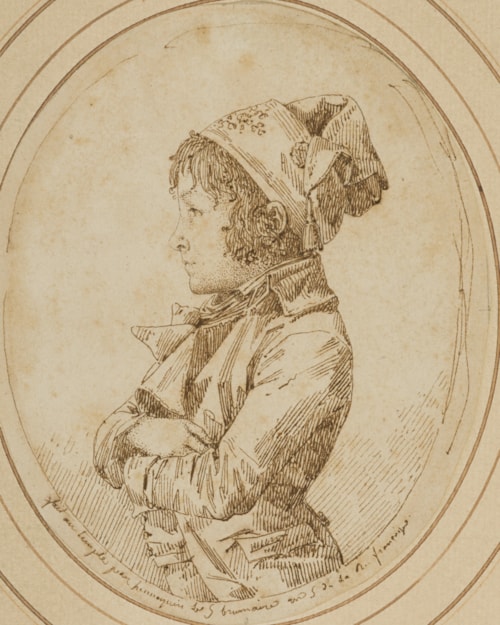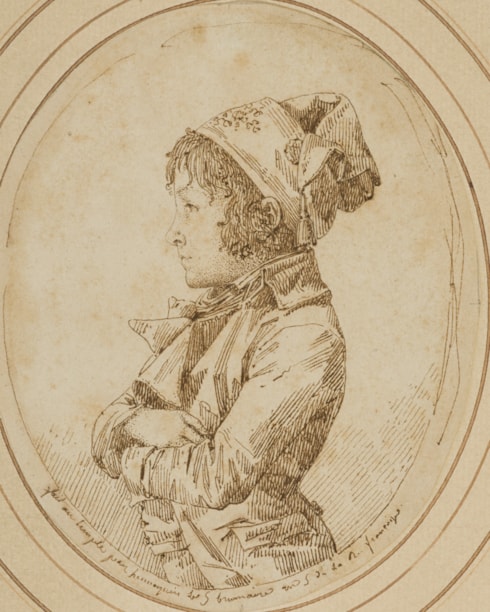
Philippe-Auguste HENNEQUIN
Lyon 1762 - Leuze 1833
Biography
Philippe-Auguste Hennequin began his studies in Lyon and completed his artistic education in Paris, for a brief time in the studio of Jacques-Louis David, from which he was expelled for allegedly stealing some of the master’s collection of prints. He travelled to Italy in the late 1780s, and on his return to Lyon in 1790 was politically active during the early years of the Revolution there. A Jacobin sympathizer, Hennequin was imprisoned for five months in Paris in 1796-1797, and although a petition was circulated among artists in support of his release, his former master David – undoubtedly the most significant artistic figure in Revolutionary Paris – refused to sign it. (Despite this, Hennequin and David later developed a respectful, if not especially close, relationship.) Hennequin first exhibited at the Salon in 1798, the year after his relase from prison. He began his mature career painting mostly history scenes and Napoleonic subjects, and came to enjoy the patronage of Baron Vivant Denon, Napoleon’s directeur-général des musées, from whom he received several official commissions. These included a Battle of Quiberon exhibited at the Salon of 1804 and a Battle of the Pyramids, shown two years later. He also contributed to the decoration of the ceiling of the Salle des Antonins of the Louvre in 1800, with a painting of the French Hercules. Hennequin continued to exhibit at the Salons until 1814, when he left France and settled in Belgium. In 1824 he became Director of the Académie de Dessin in Tournai, where he painted a cycle of scenes from the life of Saint Hubert for the church of Saint-Piet. Hennequin left a large corpus of drawings, with over 1,250 examples included in the posthumous sale of the contents of his studio in 1836. The largest extant group of drawings by the artist, numbering some fifty sheets, is today in the collection of the Musée des Beaux-Arts in Lyon.


